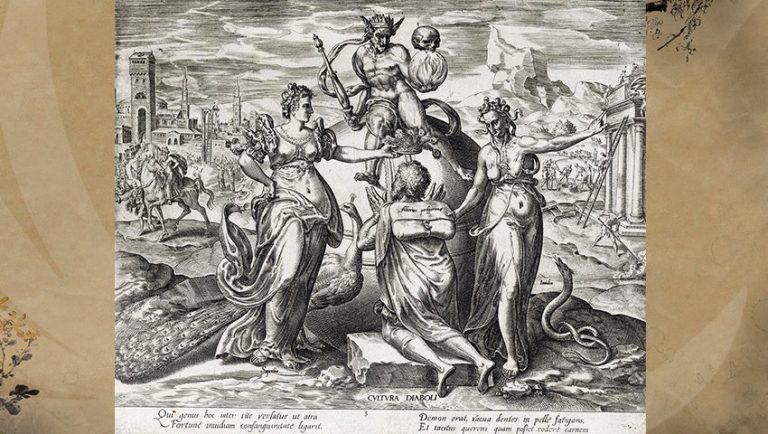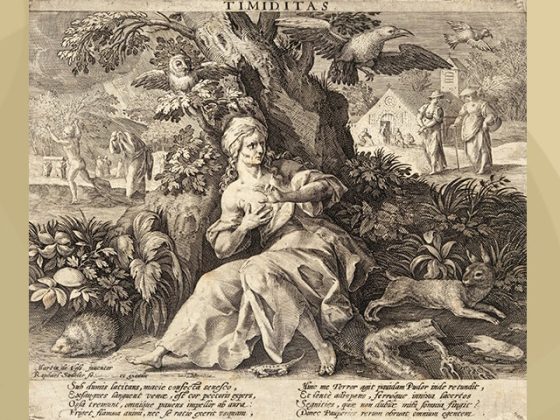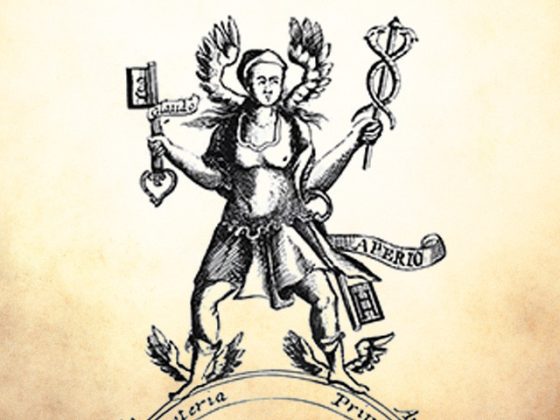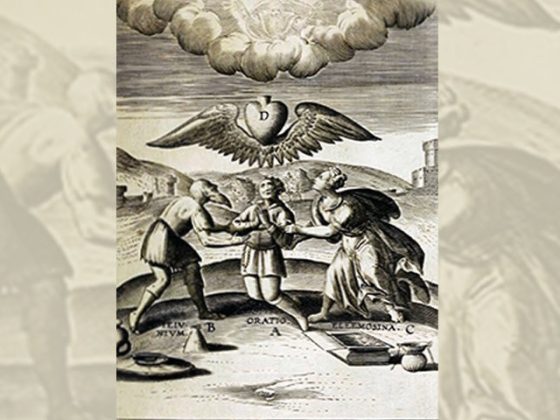Dearly beloved friends:
I now send you the third engraving of the four that I promised you and which is entitled…
…CULTURA DIABOLI
─'The Way of the Devil'─
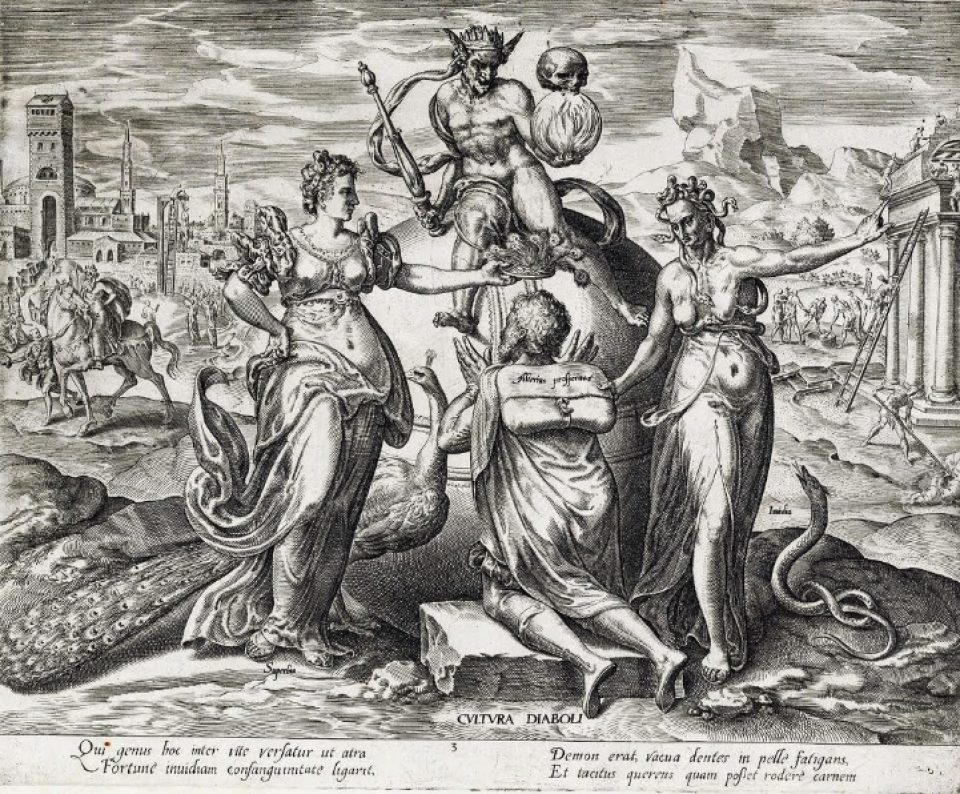
To begin our description, we will say that, if we look at the center of this artistic engraving, we will immediately see the figure of Satan seated on the sphere that represents our world, and this is to show us that, indeed, it is he who, unfortunately, governs the destinies of this human anthill.
We see Satan holding in his right hand a scepter similar to that possessed by kings, and in his left hand we can see a sphere of fire on which is a skull, a cranium, as if to indicate that he rules life and death, since people dedicate their lives to worship him and follow him even after the physical death.
On the head of the evil one we see a crown with which he sets himself up as king, having as slaves the human beings who worship him.
In front of Satan appears a man kneeling in an attitude of worshipping him, in exchange for which the unfortunate man also receives a crown from one of the ladies ─the one that appears on the left of our engraving─, at whose feet appears the word Superbia, which should be translated as ‘arrogance'. It is well known that, in the world of forms, arrogance is always accompanied by pride, ostentation, etc., etc., etc. Such are the attributes pursued by the people of sleeping Consciousness, who only long to be admired by the multitudes. For this reason, behind the lady who symbolizes arrogance appears a bird, notably a peacock. Hence, in the English language, when it comes to pointing out an arrogant or proud person, the phrase So-and-so is proud as a peacock” [“Fulano de tal no hace más que pavonearse”] is used, alluding to the fact that he only likes to show himself off to others.
The individual who worships the “I” and who is on his knees carries on his back a backpack on which is written in Latin Alterius prosperitas, meaning that human beings who follow Satan only seek prosperity at the expense of others.
To the right of the prostrated man we see another rather unpleasant-looking woman who has snakes on her head instead of hair, in the image of Medusa in Greek mythology. The breasts of this woman are uncovered and near her feet we notice a snake that observes her and obeys her. Such a woman is marked by the Latin word Invidia, signifying the defect of envy. We must not forget that ostentation provokes the envy of others, that is the harsh reality of the facts.
Behind the woman who symbolizes arrogance we see a character mounted on his steed who, by the way, is being pulled by a servant. This is how arrogance, pride, ostentation like to behave, being served by others…
Further in the background we can see a man at the top of a ladder trying to arrange a bell and trying to cut the rope with which an unfortunate man ended his life by suicide. It is well known that, many times, the desire to be admired leads us to covet riches, which often entangle our lives and we end up attempting against our existence through suicide. At the foot of this ladder one observes the people astonished by such an event, for the crowds like to see all those who wanted fame at any cost fallen into disgrace.
On the right side of our engraving we see another ladder by which someone is climbing up carrying what appears to be a piece of wood, he is going to join other individuals who are helping in the construction of a mansion. That is the task that all lovers of horizontal life like to do. Everyone likes to be surrounded by luxurious mansions to attract the attention of others.
Very close to that construction we see some people trying to pull a person out of a hole or well into which he has sunken. That is the rescue of some unfortunate souls who believed that money was everything and who were wrong.
Also, in that area we can see a person who, with a huge spear, is killing the basilisk, a mythological monster that was reputed to devour the human masses by using an enormous hypnotic power. In this case, we understand the hypnosis exerted on the human species as the “I” and its multiplicity of psychological aggregates that compose it.
The engraving has a Latin phrase at the bottom of the engraving that reads as follows:
«Qui genus hoc inter vite versatur ut atra Fortune inuidiam consanguinitate ligarit, Demon erat, vacua dentes in pelle fatigans Et tacitus querens quam posset rodere carnem».
Translation: ‘Whoever, within this condition of life, dedicates himself to linking the envy of luck with an obscure consanguinity, was a demon consuming his teeth in an illusory appearance and, in silence, desiring to consume meat, as much as possible.'
I now give you some sentences that deserve our reflection:
“Do you want to be rich? Therefore do not be anxious to increase your possessions, but to diminish your covetousness.”
Epicurus
“Those who covet many things will need many more.”
Horacio
“The greed for riches has enslaved men to the point that it seems that they do not possess riches, but that they are possessed by them.”
Pliny the Younger
“Greed seizes and blinds all powers.”
Vicente Espinel
“Not to be greedy is to be rich, and not to have the mania to buy is an income.”
Cicero
SIC TRANSIT GLORIA MUNDI.
─‘This is how the glory of the world passes’─.
KWEN KHAN KHU


